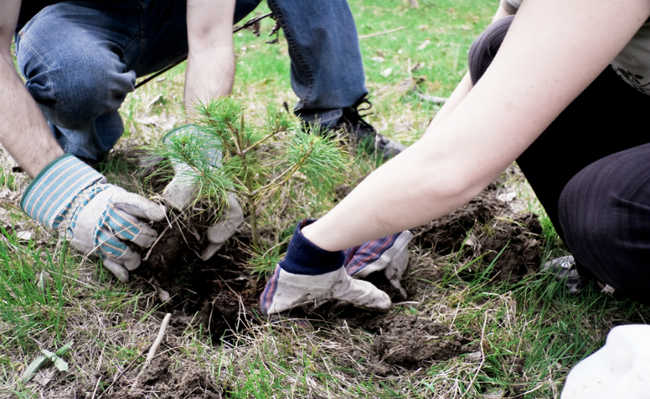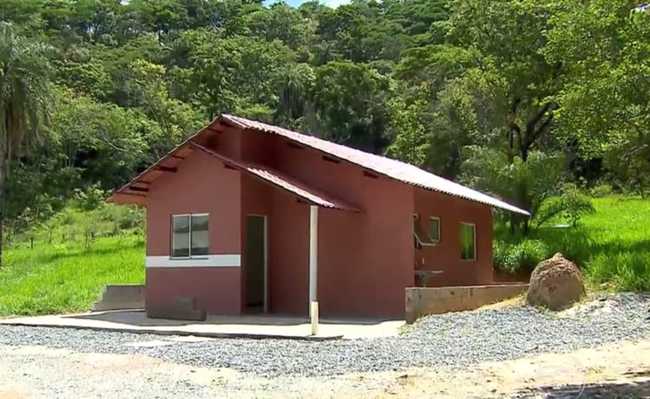Carbon Neutralization Techniques: Tree Planting
Carbon neutralization by forest CO2 sequestration is one of the most commonly used techniques

Carbon neutralization by planting trees occurs by sequestering carbon from the atmosphere, which is fixed in the plant's biomass, that is, sequestered from the environment to be fixed in the plant. A tree, on average, is capable of sequestering 15.6 kg of CO2 per year - this makes it easier to determine how many trees will be needed to neutralize company emissions obtained in the GHG emission inventory. The tree planting technique is also the most affordable method for individuals who want to neutralize their day-to-day emissions, without forgetting, of course, that it is essential to reduce the carbon footprint by making better choices. There are calculators that count the CO2 emitted and how many trees are needed to neutralize a certain value.
- What is biomass? Know advantages and disadvantages
- How to produce sustainable events
By calculating the generation of greenhouse gases (GHGs) from companies, events or people, it is possible to quantify the trees needed to offset emissions. Trees absorb CO2 (carbon dioxide or carbon dioxide) through photosynthesis, used for their growth, which is stored in biomass (leaves, trunk, roots) and is the carbon stock. But they also emit CO2 when they breathe (at night) and when they die (decomposition or burning of their biomass). When the carbon absorbed in a forest exceeds the CO2 emission from the respiration of trees, what is called carbon sequestration occurs.
To carry out the carbon-neutral action, the issuer may choose to invest in new reforestation areas as well as in already consolidated areas, such as conservation projects. Investments in new areas are invested through the purchase and planting of seedlings, as well as their maintenance. In conservation programs, trees are often already adult and have a large carbon stock per hectare, so there are costs for forest maintenance, as well as infrastructure and administration.
These certified conservation areas can sell the CO2 captured by trading carbon credits or by Reducing Emissions from Deforestation and Forest Degradation (REDD), which is an emission prevention mechanism. As mentioned before, when trees die they release the CO2 accumulated in their biomass, REDD represents the emissions avoided by deforestation or forest degradation.
Due to the high acceptance by society, low associated impact, easy accessibility, low cost and the other benefits that the ecosystem services of forests offer, the planting of trees is the most common technique to neutralize CO2 emissions and contribute to the mitigation of global warming.
- Carbon credits: what are they?
- What is deforestation?
How do I know if I produce carbon emissions? Do I need to neutralize?
The carbon footprint (carbon footprint - in English) is a methodology created to measure greenhouse gas emissions - all of them, regardless of the type of gas emitted, are converted into equivalent carbon. These gases, including carbon dioxide, are emitted into the atmosphere during the life cycle of a product, process or service. Examples of activities that generate emissions are the burning of fossil fuels such as air travel and mechanized harvesting, consumption of any nature (food, clothing, entertainment), event production, the creation of pasture for cattle, deforestation, production of cement, among others. All these activities, in addition to the other gases, emit carbon and can be carried out by people, companies, NGOs and governments - that's why all these entities can carry out carbon neutralization.
If you eat a plate of rice and beans, be aware that there was a carbon footprint for that meal - if your plate contains food of animal origin, this footprint is even greater (planting, growing and transporting). Knowing the carbon emission, directly or indirectly, is very important to reduce it in order to slow down global warming, improve the planet's quality of life, reduce the ecological footprint and avoid overshoot, known as the Earth overload.
- If people in the US traded meat for beans, emissions would be drastically reduced, according to research.
- Garbage separation: how to properly separate garbage
- What is compost and how to make it
Reducing superfluous consumption and opting for a more environmentally friendly posture, practicing correct disposal and composting, for example, are ways to avoid carbon emissions. As for the carbon emission that it was not possible to avoid, it is necessary to neutralize.
How can I do carbon neutralization?
Some companies, such as Eccaplan , offer the carbon calculation and carbon offsetting service for individuals and companies. Unavoidable emissions can be offset in certified environmental projects. In this way, the same amount of CO2 emitted in companies, products, events or in each person's daily life is compensated with incentives and the use of clean technologies.
Carbon offsetting or neutralization, in addition to making environmental projects financially viable, improves people's quality of life and promotes the sustainable use of green areas. To find out how to start neutralizing the carbon emitted by you, your company or event, watch the video and fill out the form below:










